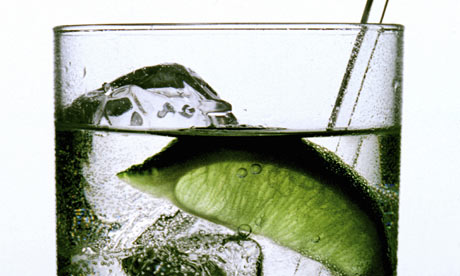
Due to the large quantities of not so good food within reaching distance over the Xmas and new year period, as well as the volume of parties and other social events, this part of the calendar is a difficult time to maintain bodyweight. As such, the purpose of this article is to suggest some tips to avoid sabotaging your diet over the festive period.
During this time, most people usually fall into one of two categories. The first type of person (the obsessive type) carries on the way they did the other 300+ days of the year and doesn’t gain an ounce of fat. They felt miserable and deprived over Xmas, but at least they still have their six-pack! The other type of person, completely caves into temptation and eats everything in sight, and more. They end up gaining a significant amount of body fat in as little as a couple of weeks, which can often take a few months to shift with anything but extreme dieting. This type of person has a great time over Xmas but pays the price come new year. These type of people are also seemingly responsible for the sudden January ‘spike’ in gym memberships.
For those of you who want to have your cake and eat it (no pun intended), this short article will hopefully give you some tips that will allow you to have a certain degree of flexibility within your diet and enjoy the festivities, without the unwanted fat gain. Nothing in this article is new, in fact, many of these ideas have been discussed in detail elsewhere; I can remember Lyle McDonald even writing a similar article a few years ago on this very topic. You won't find things like “keep your eye on the prize”, choose to lose” or “Just say NO” here. What I’m attempting to achieve is to combine some science and a little common sense, to allow people to eat more of what everyone else is having without worrying too much about the consequences. Contrary to several claims in recent years, ingesting more energy that is expended over a protracted period is basically what fat gain boils down to. Therefore, the following strategies all work by minimising the chances of overeating.
1. Eat lean protein and vegetables prior to (or at) the event before tucking into more calorific food. Given the satiating power of lean proteins such as chicken, turkey and some fish (e.g. cod and tuna), consuming some protein will curb hunger somewhat before you move on to more calorific mains and desserts, leaving you less likely to overeat. Adding some veg to this protein snack/meal will add to the satiating effects of protein.
2. Try intermittent fasting. Though there are many approaches to intermittent fasting, arguably the most popular interpretation is that of Martin Berkhan from LeanGains. His approach involves fasting for 14-16 hours everyday, leaving the person with an 8-10 hour window to consume all their food for the day (typically to the tune of 2-3 larger meals). Assuming the party will be in the evening, an individual would fast (or only consume lean protein and veg) during the day then consume all of (or the majority of) their calories that evening. If they will be eating the bulk of the food during the day there is no reason not to fast (or just consume protein) for the rest of the day, or even the following day. Using this protocol, unless the person eats everything in sight, it is unlikely that they will consume much more than their maintenance caloric needs, if at all.
3. Employ a degree of ‘damage control’. Lyle McDonald used this term in relation to dieting in his book A Guide to Flexible Dieting. It ties into the previous point about not eating everything in sight, or until you feel like you’re going to burst. Oftentimes, when people eat something they think they shouldn’t, they gorge on whatever they were eating until they consumed the whole thing. They see themselves as a failure for breaking their diet and somehow rationalise to themselves that “If I ate one piece of cake, I might as well have three”. If you go to a party or meal, eat what you want, but stop eating when you’re satisfied. There is no point going eating beyond hunger just for the sake of it, you’ll probably just regret it in the long run. Basically, eat what you fancy, enjoy it, don’t feel guilty, and don’t be a pig about it.
4. Eat out. This ties in with the last point about damage control. If you’re at a friend’s party it is much easier to eat several pieces of cake or whatever else takes your fancy. However, if you’re at a restaurant, you can only imagine the awkwardness of ordering three desserts.
5. Go deplete some glycogen. In addition to increasing fat oxidation, depleting glycogen prior to an event or meal will increase the likelihood that the carbs you consume will be stored as glycogen instead of being used for energy or possibly being stored as fat; it’s almost like you are getting those calories for free. To deplete glycogen, you’ll need to increase your training volume leading up to the event. This can be achieved by performing more reps (8-12 per set) and more sets (4-8 depending on how many body parts you’re training). Something akin to German volume training should do the trick. Otherwise you can simply get more running or cycling miles in at a decent enough intensity (two or three extra hard 60 minute efforts should almost empty muscle glycogen stores, assuming you aren’t compensating with food intake).

6. Go for the low calorie option. Again, this ties into point 3 about limiting the amount of damage. Go for low fat versions of cakes and other desserts. For alcohol, opt for spirits with a diet mixer to get as drunk as you desire while consuming the minimal amount of calories. If these options aren’t feasible you could always host your own party.
In conclusion, these are some simple strategies that anyone can employ to ultimately prevent overeating over Xmas, or in similar situations at other times of the year. Though each point will work alone, they can be combined to increase their effectiveness. For example, performing depletion work, while intermittent fasting, followed by eating out will almost guarantee that you won’t overeat. In fact, chances are that you’ll lose body fat with this approach. There are other things you can do, but for the most part, I feel that these are the most effective without being too restrictive. As a final pointer, it would be best to steer clear of the bathroom scales since bodyweight tends to fluctuate independent of actual fat mass due to variations in sodium and carbohydrate intakes. This water retention may lead you to believe that you’ve gained 3kg of fat in a couple of days, however, such a feat would require a daily energy surplus in excess of 11,000 kcal! By following some of these principles, the worst/least common case scenario is that you gain a pound or two of fat, which is far better than ten. This isn't a bad price to pay for an enjoyable Xmas, and you can be back to your pre-Xmas body composition by mid-January.






